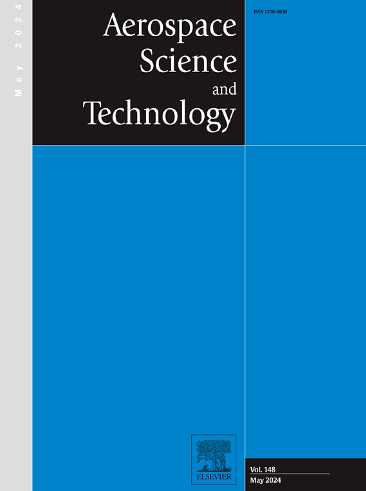Modeling and full-speed range transition strategy for a compound helicopter
IF 5
1区 工程技术
Q1 ENGINEERING, AEROSPACE
引用次数: 0
Abstract
Compound helicopters are faced with the problem of transition from low-speed helicopter mode to high-speed airplane mode. This study presents a comprehensive flight dynamics model and a full-speed range transition strategy, focusing on Compound Helicopters with Double Propeller Propulsion (CHDPP). In order to consider aerodynamic interactions efficiently, the model integrates classic modeling theories with a simplified imposed rotor wake model and a modified rotor-wing aerodynamic interaction model. The design of the full-speed range transition strategy utilizes a double-layer iterative approach based on the trim method with control redundancy. The inner iteration ensures uniform control surface effectiveness through control surface allocation, while the outer iteration ensures safety and satisfactory handling quality by improving transition paths. We developed a 12 kg CHDPP prototype as the sample CHDPP and carried out a wind tunnel trim experiment for model validation. The results show that the presented model can eliminate correction factors while maintaining sufficient accuracy. The obtained full-speed range transition strategy can ensure safety, cockpit input effectiveness while avoiding abrupt changes and counterintuitive variations in trim characteristics. Furthermore, since the modeling technique is independent of correction factors and the transition strategy design method is not dependent on a specific helicopter configuration in nature, they can be extended to various compound helicopter configurations, eventually providing a robust tool for the development of compound helicopters.
求助全文
约1分钟内获得全文
求助全文
来源期刊

Aerospace Science and Technology
工程技术-工程:宇航
CiteScore
10.30
自引率
28.60%
发文量
654
审稿时长
54 days
期刊介绍:
Aerospace Science and Technology publishes articles of outstanding scientific quality. Each article is reviewed by two referees. The journal welcomes papers from a wide range of countries. This journal publishes original papers, review articles and short communications related to all fields of aerospace research, fundamental and applied, potential applications of which are clearly related to:
• The design and the manufacture of aircraft, helicopters, missiles, launchers and satellites
• The control of their environment
• The study of various systems they are involved in, as supports or as targets.
Authors are invited to submit papers on new advances in the following topics to aerospace applications:
• Fluid dynamics
• Energetics and propulsion
• Materials and structures
• Flight mechanics
• Navigation, guidance and control
• Acoustics
• Optics
• Electromagnetism and radar
• Signal and image processing
• Information processing
• Data fusion
• Decision aid
• Human behaviour
• Robotics and intelligent systems
• Complex system engineering.
Etc.
 求助内容:
求助内容: 应助结果提醒方式:
应助结果提醒方式:


